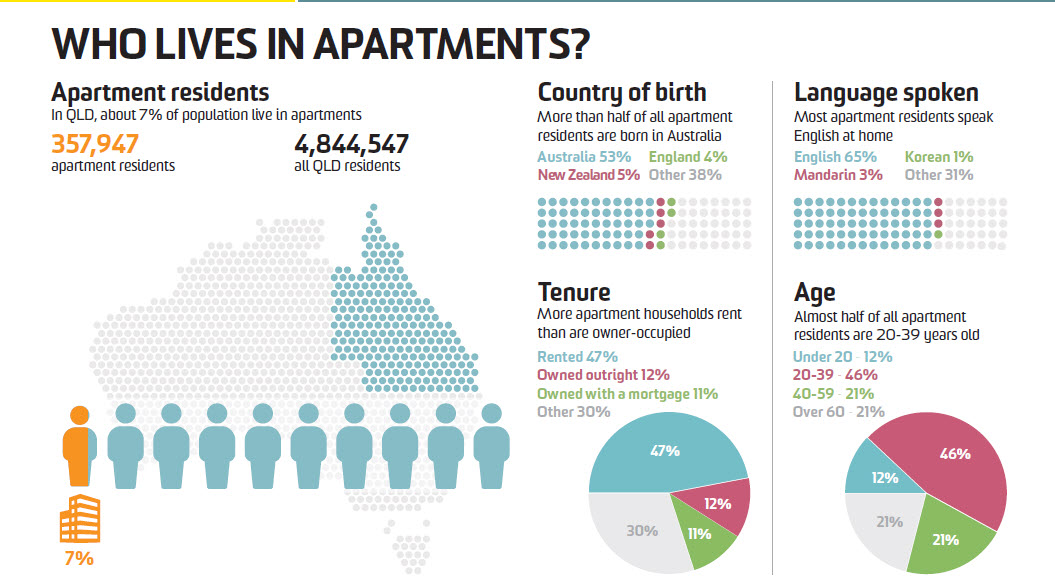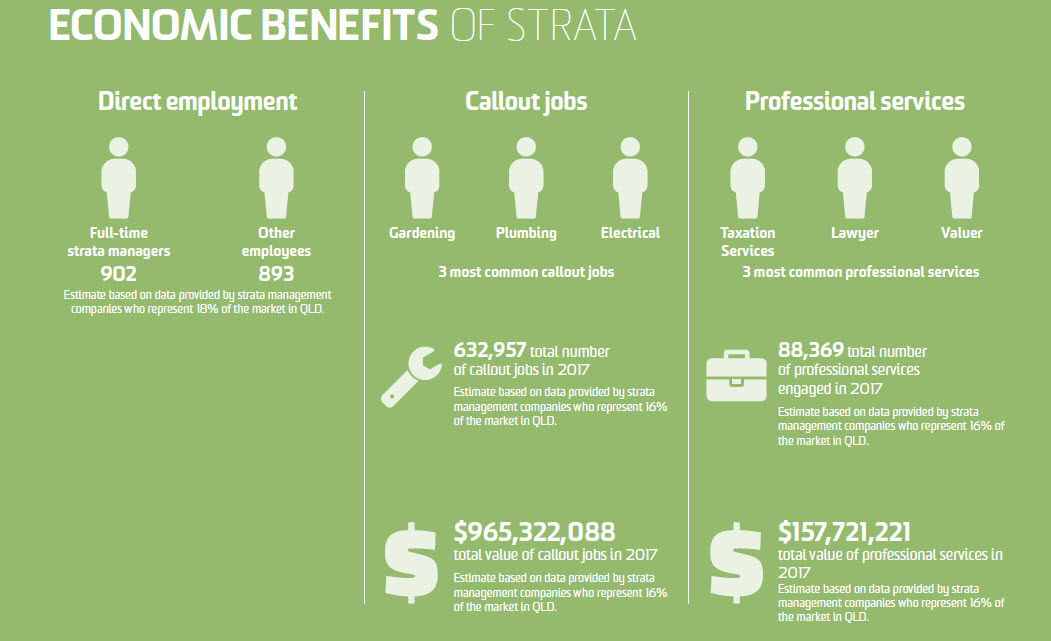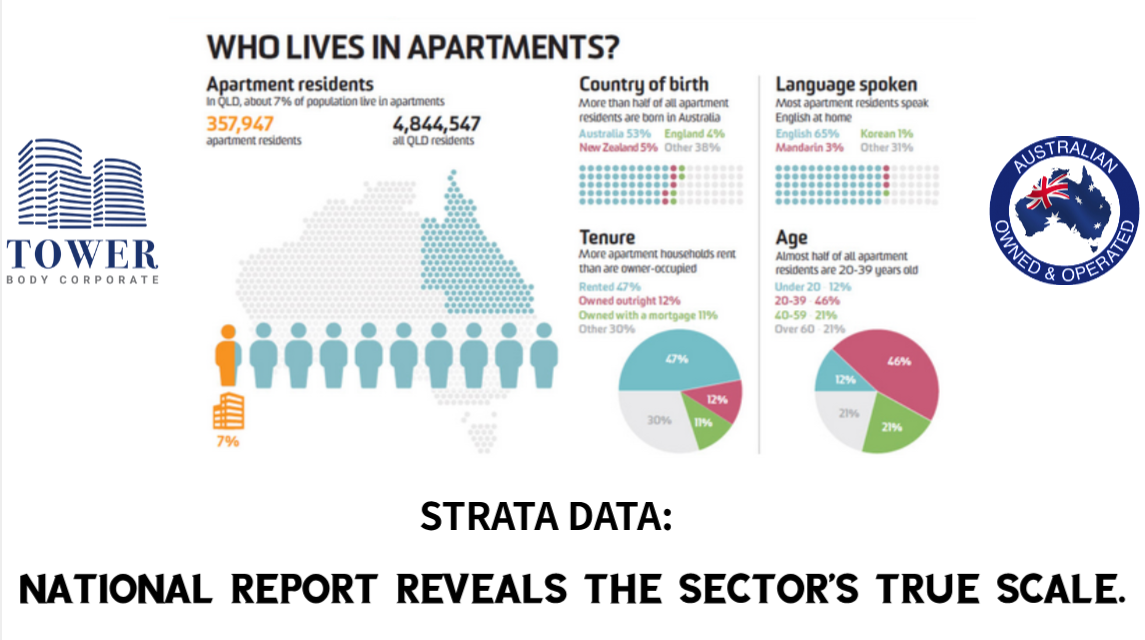According to national strata authority, Strataville, the University of New South Wales’s comprehensive report into the sector is the first of its kind, reveals the full scale of its place in Australia’s economy.
The 38-page report, entitled Australian National Strata Data 2018, has brought together data from each state and territory’s land titles offices, presenting it in a series of meaningful infographics that makes it easy to compare between states, and nationally. The report also provides a detailed breakdown of how the authors compiled and organised the data. With this cohesive picture of Australian strata scheme statistics, government agencies, industry professionals, insurers and owners are armed to make well-informed decisions for the future.
In this article, we take a close look at the strata data for Queensland compared with the Australia-wide results.

What the Figures Say
The report gathered data from a range of government and industry sources. By analysing this data across fixed variables, the report provides a clear and comprehensive picture of how the states and territories compare with each other, and against the nation as a whole.


Across Australia, about 9% of the population lives in apartments, with more rented (48%) than are owner-occupied (26%). In Queensland, 7% of people live in apartments, and again more households are rented (47%) than are owner-occupied (23%). Figure 1 and Figure 2 below show how these households are made up across the country, and in Queensland.
| Australia | Queensland | % of national total | |
| Total number of schemes | 316,227 | 48,083 | 15 |
| Total number of lots | 2,587,397 | 473,838 | 18 |
| Property value (insured value) | $995,254,733,912 | $192,696,464,696 | 19 |
Economic Benefits
As well as revealing the size of the sector in terms of demographic and social terms, this research has brought home just how big it is in economic terms as well. The insured value of the assets only presents part of the picture. The value to the national economy in terms of associated trades and services is in excess of $6 billion. This is before factoring in the value of more than 9,000 jobs engaged directly in the sector.
| Australia | Queensland | % of national total | |
| Full-time managers | 4,303 | 902 | 21 |
| Other employees | 5,027 | 893 | 18 |
| Total number of callout jobs | 3,257,341 | 632,957 | 19 |
| Total value of callout jobs | $5,728,427,524 | $965,322,088 | 17 |
| Total number of professional services engaged | 441,532 | 88,369 | 20 |
| Total value of professional services | $903,917,019 | $157,721,221 | 17 |
Economic Implications
The report, which was funded by the Strata Community Association is, according to Association CEO Erik Adriaanse, “a huge opportunity to assess what the sector does, how big it is, how the economy benefits (and) will have a profound effect on the way regulators and government … build their policy framework to ensure that owners, strata professionals and suppliers will derive maximum economic benefit.”
Lead author of the research, Associate Professor Hazel Easthope, likens the sector to a fourth tier of government, with schemes collecting levies to cover the costs of maintaining their buildings. “But,” she adds, “unlike a government, they are run by volunteers – individual owners who have been elected to make decisions about how to manage the building. As a result, you have volunteers managing assets worth millions of dollars, with annual turnovers of hundreds of thousands or even millions of dollars.”

As we see the growth of strata and community titled property construction, it’s important to grow our understanding of the implications that this style of living has on our economic and social future, as well on government policy and management. The Australian National Strata Data 2018 report gives us a benchmark for comparison now and for the future.
Download the full report
Want to read more? Download the full report from UNSW’s City Futures Research Centre site at https://cityfutures.be.unsw.edu.au/research/projects/national-strata-data-analysis/


One reply on “Strata Data: National Report Reveals the Sector’s True Scale”
[…] 17% of Australians live in Strata title homes, such as apartments or townhouses. In Queensland, 7% of the state’s population live in apartments and we are seeing an increasing growth in the construction of strata and […]